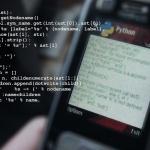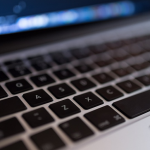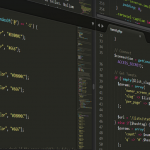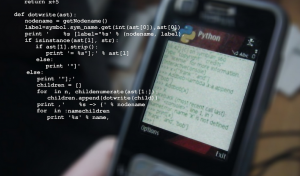Mastering the Basics: The Scientific Method on Display
Welcome to the wonderful world of scientific exploration! In this blog post, we’ll dissect a fascinating lab exercise that embodies the very foundation of scientific inquiry – the scientific method. Get ready for a journey through observation, experimentation, data analysis, and ultimately, the thrill of uncovering the secrets of the natural world.
Remember those epic stories from history about groundbreaking discoveries? Think Galileo peering at stars with his telescope, or Marie Curie unraveling the mysteries of radioactivity. These pioneers were driven by an insatiable curiosity to understand how things worked – their journey started with a simple yet powerful question: “How can we learn more?”
This lab exercise serves as a powerful reminder that even seemingly complex scientific processes begin with the very basics. We’ll delve into each stage of the scientific method, equipping you with not just the knowledge, but also the confidence to embark on your own scientific adventures.
Let’s dive in – our journey begins with the cornerstone of the scientific method: **Observation.**
Imagine walking through a busy city park on a sunny afternoon. You notice vibrant flowers blooming all around you – their colors, shapes, and sizes captured your attention. This initial observation sparked curiosity – why are these flowers so diverse? What makes them unique?
In the lab exercise, observe and document any interesting phenomena that catch your eye. For example, perhaps you find an intriguing pattern in the way light interacts with a particular material. Or maybe you notice how different liquids behave when poured at different angles – a seemingly simple observation that offers a glimpse into the laws of physics.
Next up: **Questioning.** This is where we take our initial observations and delve deeper. Our curiosity about the flowers’ variations leads us to ask questions. We may wonder: “Why do they have different colors?” or “How much variation exists between the flower species?”
The key here is asking thought-provoking questions. Don’t shy away from being curious! Challenge your assumptions and explore various possibilities. This stage is crucial because it sets the stage for a detailed exploration of our world.
Our next stop: **Hypothesis.** Now, we take those fascinating questions and formulate hypotheses, which are educated guesses about what might be causing the observed phenomena. For example, in our flower observation, your hypothesis might be “Different flower colors likely depend on their specific species.”
A hypothesis is a tentative answer to a question – it’s not just a guess; it’s a clear statement of what you think may occur. It represents the starting point of your investigation.
The next step involves **Experimentation.** This is where we put our hypothesis to the test! We design an experiment to directly investigate this idea and gather data. For example, if your hypothesis was “Different flower colors depend on species,” you might compare flowers from different species by observing their color variations under controlled conditions.
In this stage, meticulous planning is key – we need to ensure our experiment is well-defined, with clear variables that are being manipulated. This includes knowing exactly what factors we’re controlling and how the data will be collected.
Once you have your experiment set up, remember to **Collect Data.** The essence of scientific inquiry lies in observing and recording information meticulously. We use tools like rulers, scales, digital cameras, and thermometers – tools designed to measure and record data objectively.
Data is not just a jumble of numbers; it is the very foundation of our understanding. It allows us to quantify our observations and draw meaningful conclusions. By recording everything accurately and systematically, we gain an unparalleled understanding of the world around us.
Finally, let’s analyze **Results.** The raw data is analyzed using various methods like charts, graphs and spreadsheets. This step helps us uncover patterns and insights that would otherwise be missed. We are looking for a correlation between our hypothesis and the observed phenomena – did our results support our initial guess?
Remember: scientific inquiry is all about the journey, not just the destination! Even if our results don’t completely align with our expectations, we can still learn valuable lessons. Every experiment offers opportunities to refine our understanding of the natural world.
The final step in the scientific method is **Conclusion**. We draw a final conclusion based on the analysis of the data and how it supports or challenges our initial hypothesis.
By following this systematic process, we build upon one another’s knowledge – a true testament to the collective wisdom of humanity. The goal here is not just to answer questions but also to contribute to our shared understanding of the world around us.
Remember: This lab exercise serves as a starting point for your journey into the exciting realm of scientific exploration. There’s so much more out there – waiting to be discovered, analyzed, and understood!
We hope you enjoyed this insightful dive into the fundamental steps of the scientific method. Now that we understand these building blocks, it’s time to go forth and explore! Embrace the joy of discovery and remember, even the most seemingly simple questions can lead us on an incredible journey of learning and wonder.














